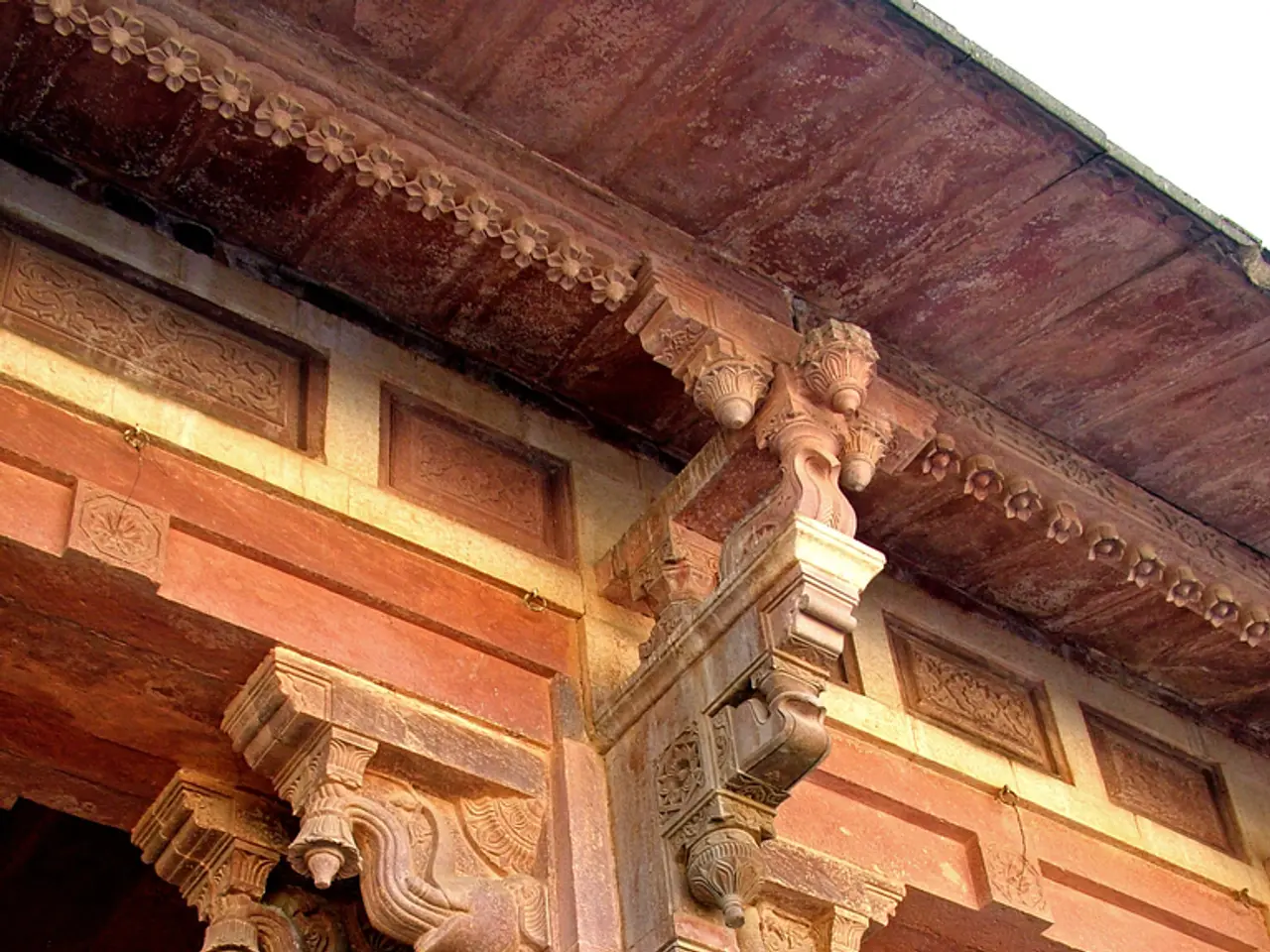Ujjain's Mahakaleshwar Temple is a highly recommended destination to visit during Sawan Shivratri 2025, due to its significant status and allure.
In the heart of the holy city of Ujjain, Madhya Pradesh, lies a spiritual treasure trove that draws countless devotees from far and wide - the Mahakaleshwar Temple. This revered temple is one of the 12 Jyotirlingas, the most sacred sites of Shiva worship in India, and stands out for its unique Dakshinamukhi (facing south) lingam, believed to be self-manifested from the earth itself [1][3][5].
The temple's architectural grandeur is a sight to behold, with 108 intricately carved pillars depicting various avatars of Shiva, including Ardhanarishvara, Neelkantha, and others associated with Shiva’s cosmic roles [1]. Ujjain's location at the intersection of the Tropic of Cancer and the Zero Meridian adds to its mystical significance, symbolically positioning the temple at a cosmic central point [1][3].
The temple's most famous ritual, the Bhasma Aarti, is a spectacle that draws devotees from dawn. During this ritual, sacred ashes are used to awaken the conqueror of death, Mahakal [3]. Women are asked to cover their eyes during this sacred moment when the jyotirlinga is inundated in ashes [2].
The temple's main gate features massive pillars etched with intricacies detailing each of Lord Shiva's avatars and their significance. The Mahakal corridor, expanded in October 2021 to decongest and beautify the temple and its neighboring area, houses an open-air theater, a museum of mythology, and a lotus pond [4].
Just a stone's throw away, the Trivishteshwar Mahadev Temple is another significant Shiva temple in Ujjain. Known for its serene atmosphere and traditional puja rituals, it contributes to Ujjain’s reputation as a major center for Shiva worship [4].
Ujjain's spiritual significance extends beyond these two temples. The city is home to 84 Mahadevas, various forms of Shiva worshiped for different blessings such as wisdom, courage, and governance. It also houses 64 Yoginis, female tantric deities associated with the goddess Durga, and 8 Bhairavas, fierce guardian forms of Shiva protecting the city from evil [2]. There are also 6 Vinayakas, forms of Lord Ganesha offering various blessings [2].
The city of Ujjain, with its bizarre mix of empty and energetic streets at 3 am, offers a unique experience. Tea stalls, night markets, and groups of people dancing create a vibrant atmosphere, making the wait to be blessed by a darshan of one of the 12 jyotirlingas all the more worthwhile [2].
The last night of a visitor's stay in Ujjain might be spent sleeplessly, thinking about hope and happenstances. Yet, the spiritual energy that permeates the city serves as a reminder of the profound significance of these ancient temples and the deep-rooted Shaiva tradition that Ujjain represents in Hindu spirituality and cosmology [1][3].
[1] [https://en.wikipedia.org/wiki/Mahakaleshwar_Temple] [2] [https://en.wikipedia.org/wiki/Ujjain] [3] [https://www.thehindu.com/news/national/other-states/mahakaleshwar-temple-in-ujjain-becomes-a-tourist-attraction-after-its-expansion/article36925031.ece] [4] [https://www.deccanherald.com/content/1052149/trivishteshwar-mahadev-temple-ujjain.html] [5] [https://www.thehindu.com/sci-tech/energy-and-environment/ujjain-at-the-cosmic-centre/article32859644.ece]
The Mahakal corridor, expanded recently, includes an open-air theater, a museum of mythology, and a lotus pond, creating a supplementary tourist attraction for the spiritual city of Ujjain [4]. After immersing themselves in the culture and architecture of Ujjain, tourists might contemplate the profound impact of these ancient temples, particularly the Mahakaleshwar Temple, on Hindu spirituality and cosmology [1][3].




